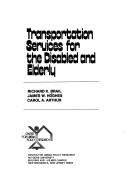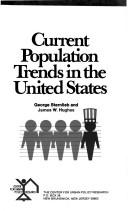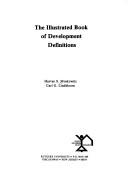| Listing 1 - 10 of 17 | << page >> |
Sort by
|

ISBN: 0882850393 Year: 1977 Publisher: New Brunswick, N.J.
Abstract | Keywords | Export | Availability | Bookmark
 Loading...
Loading...Choose an application
- Reference Manager
- EndNote
- RefWorks (Direct export to RefWorks)
Aged --- -People with disabilities --- -351.778.5 <73> --- 351.778.5 <73> Ruimtelijke ordening. Volkshuisvesting. Plannen van aanleg. Woningbouw.--Woonhygiene, zie {613.5}; z.o. {?711.6-164}--Verenigde Staten van Amerika. VSA. USA --- Ruimtelijke ordening. Volkshuisvesting. Plannen van aanleg. Woningbouw.--Woonhygiene, zie {613.5}; z.o. {?711.6-164}--Verenigde Staten van Amerika. VSA. USA --- Cripples --- Disabled --- Disabled people --- Disabled persons --- Handicapped --- Handicapped people --- Individuals with disabilities --- People with physical disabilities --- Persons with disabilities --- Physically challenged people --- Physically disabled people --- Physically handicapped --- Persons --- Disabilities --- Sociology of disability --- Aging people --- Elderly people --- Old people --- Older adults --- Older persons --- Senior citizens --- Seniors (Older people) --- Age groups --- Gerontocracy --- Gerontology --- Old age --- Transportation --- -Transportation --- -Ruimtelijke ordening. Volkshuisvesting. Plannen van aanleg. Woningbouw.--Woonhygiene, zie {613.5}; z.o. {?711.6-164}--Verenigde Staten van Amerika. VSA. USA --- Methods in social research (general) --- Sociology of environment --- -Methods in social research (general)
Book
Year: 1974 Publisher: New Brunswick (N.J): Center for urban policy research,
Abstract | Keywords | Export | Availability | Bookmark
 Loading...
Loading...Choose an application
- Reference Manager
- EndNote
- RefWorks (Direct export to RefWorks)
Book
Year: 2002 Publisher: Cambridge, Mass. National Bureau of Economic Research
Abstract | Keywords | Export | Availability | Bookmark
 Loading...
Loading...Choose an application
- Reference Manager
- EndNote
- RefWorks (Direct export to RefWorks)
Book
Year: 1974 Publisher: New Brunswick Rutgers university. Center for urban policy research
Abstract | Keywords | Export | Availability | Bookmark
 Loading...
Loading...Choose an application
- Reference Manager
- EndNote
- RefWorks (Direct export to RefWorks)

ISBN: 9780882850535 0882850539 Year: 1978 Publisher: NEW BRUNSWICK: Center for urban policy research,
Abstract | Keywords | Export | Availability | Bookmark
 Loading...
Loading...Choose an application
- Reference Manager
- EndNote
- RefWorks (Direct export to RefWorks)
Book
Year: 1972 Publisher: New Brunswick (N.J.): Rutgers University press,
Abstract | Keywords | Export | Availability | Bookmark
 Loading...
Loading...Choose an application
- Reference Manager
- EndNote
- RefWorks (Direct export to RefWorks)

ISBN: 0882850687 Year: 1981 Publisher: Piscataway (N.J.) : Center for urban policy research,
Abstract | Keywords | Export | Availability | Bookmark
 Loading...
Loading...Choose an application
- Reference Manager
- EndNote
- RefWorks (Direct export to RefWorks)
Book
ISBN: 0813588332 Year: 2022 Publisher: New Brunswick, New Jersey : Rutgers University Press,
Abstract | Keywords | Export | Availability | Bookmark
 Loading...
Loading...Choose an application
- Reference Manager
- EndNote
- RefWorks (Direct export to RefWorks)
To fully understand New Jersey in the 2020s and beyond, it is crucial to understand its ever-changing population. This book examines the twenty-first century demographic trends that are reshaping the state now and will continue to do so in the future. But trend analysis requires a deep historical context. Present-day New Jersey is the result of a long demographic and economic journey that has taken place over centuries, constantly influenced by national and global forces. This book provides a detailed examination of this journey. The result is present-day New Jersey. The authors also highlight key trends that will continue to transform the state: domestic migration out of the state and immigration into it; increasing diversity; slower overall population growth; contracting fertility; the household revolution and changing living arrangements; generational disruptions; and suburbanization versus re-urbanization. All of these factors help place in context the result of the 2020 decennial U.S. Census. While the book focuses on New Jersey, the Garden State is a template of demographic, economic, social, and other forces characterizing the United States in the twenty-first century.
Population forecasting --- Cities and towns --- History --- Growth --- New Jersey --- Population --- New Jersey, population trends, history, urban studies, public policy, demographics, domestic migration, immigration, diversity, growth, fertility, household, living arrangements, suburbanization, re-urbanization, US census, Garden State, baby boom, residential housing, metropolitan residence, population density.
Book
ISBN: 081357000X Year: 2014 Publisher: New Brunswick, NJ : Rutgers University Press,
Abstract | Keywords | Export | Availability | Bookmark
 Loading...
Loading...Choose an application
- Reference Manager
- EndNote
- RefWorks (Direct export to RefWorks)
New Jersey has a long history of adapting to a changing economic climate. From its colonial origins to the present day, New Jersey's economy has continuously and successfully confronted the challenges and uncertainties of technological and demographic change, placing the state at the forefront of each national and global economic era. Based on James W. Hughes and Joseph J. Seneca's nearly three-decade-long Rutgers Regional Report series, New Jersey's Post-suburban Economy presents the issues confronting the state and brings to the forefront ideas for meeting these challenges. From the rural agricultural and natural resource based economy and lifestyle of the seventeenth century to today's postindustrial, suburban-dominated, automobile-dependent economy, the economic drivers which were considered to be an asset are now viewed by many to be the state's greatest disadvantage. On the brink of yet another transformation, this one driven by a new technology and an internet based global economy, New Jersey will have to adapt itself yet again-this time to a post-suburban digital economy. Hughes and Seneca describe the forces that are now propelling the state into yet another economic era. They do this in the context of historical economic transformations of New Jersey, setting out the technological, demographic, and transportation shifts that defined and drove them.
Book
ISBN: 9780813570006 Year: 2014 Publisher: New Brunswick, NJ
Abstract | Keywords | Export | Availability | Bookmark
 Loading...
Loading...Choose an application
- Reference Manager
- EndNote
- RefWorks (Direct export to RefWorks)
| Listing 1 - 10 of 17 | << page >> |
Sort by
|

 Search
Search Feedback
Feedback About UniCat
About UniCat  Help
Help News
News